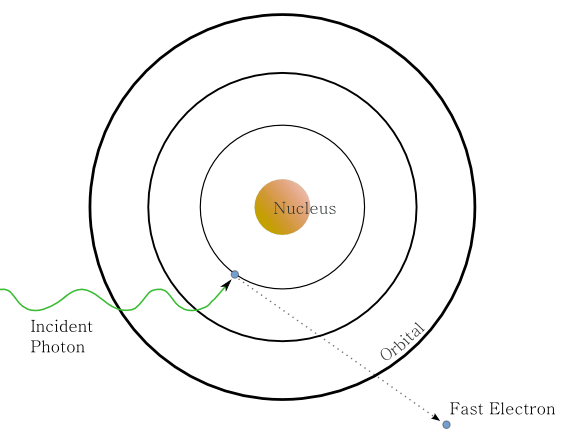Radiobiology > Physical Processes > Atomic and Molecular Interactions > Photoelectric Absorption
Photoelectric Absorption
![]()
An atom completely absorbs a photon, which then disappears; this excess energy provided to the atom ultimately results in ejection of an orbital electron. The ejected electron is known as a photo electron.
Electrons have binding energies of orbit, with outer shells having less energy than those closer to the positive nucleus. When the initial orbital vacated is not that of an outer valance electron, the atom remains in a high-energy state until an outer orbital electron shifts to fill its incomplete inner shell. This shift is accompanied by emission of a characteristic X-ray.
Photoelectric Absorption is an important interaction for low energy photons (<100 KeV).

True or False?
The "photo electron" and free radical can interact with other molecules -- ultimately leading to ionizations and bond breakage, which are the biologically-important molecular manifestations of radiation damage.
